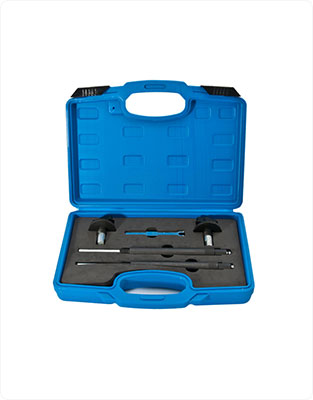1. About the hydraulic flaring tool
The Hydraulic Flaring Tool is a useful piece of equipment that reduces burn time and can be used to make incendiary bombs for fuel, air conditioning and brake lines in one kit. The Hydraulic Flaring Tool is a versatile automotive tool kit capable of flaring basically aThe Hydraulic Flaring Tool is a versatile ny line needed to replace brake and fuel lines. It's used for a variety of purposes, but it's a must-have for shops that regularly repair or replace any type of line. The hydraulic flaring tool itself is divided into 4 parts: yoke, yoke handle, hydraulic handle and clamping screw. The plunger is threaded so the yoke can be screwed onto the handle. The assembly tool is fairly simple: slide the clamp screw into the clamp screw, screw the yoke onto the hydraulic handle, and screw the yoke handle into the hole in the bottom of the yoke. From there, the hydraulic flaring tool is assembled and can be used for flaring.
2. Operation of hydraulic flaring tool
Hydraulic flaring tools operate by shutting off the hydraulic system inside the handle and pumping. This projects the plunger forward into the bracket that supports the mold. When flaring, fit the tube into a mold that matches the outside diameter of the tube, then place the two parts together into the yoke. Then secure the module into the bracket by twisting the clamping screw. A die inserted into the end of the plunger then forms the desired flare shape of the tubing held within the die set.
Once the tubing is secured into the yoke, the flaring process begins. First, turn the release knobs (marked closed and open) to "closed" and install the OP 0 mold into the plunger. The tube is then inserted into the mold and placed into the yoke. It is important that when placing the tubing into the yoke, the tubing must be flush or at least slightly over the edge of the mold. The brake repair tools allows tightening of the clamping screws after placing the module in the yoke. Do not overtighten as the OP 0 die is used to align the tube flush with the surface of the master die and the tube needs to be able to move within the die for this to happen.
In order to align the tube with the die pump, once the die set and plunger die is set up, until it becomes very hard to squeeze. Once this happens, the tubes are aligned and the release knob can be turned open. This will retract the plunger. This is a common procedure for every torch and can be used at the beginning of every torch operation.
From here, the process is different. Dies will vary depending on the desired flare shape: double flares will use the flare simply marked with the OD of the pipe, while other dies will be marked with additional details representing their corresponding flares (i.e. ISO, connection and general-purpose fuel).
 EN
EN


















